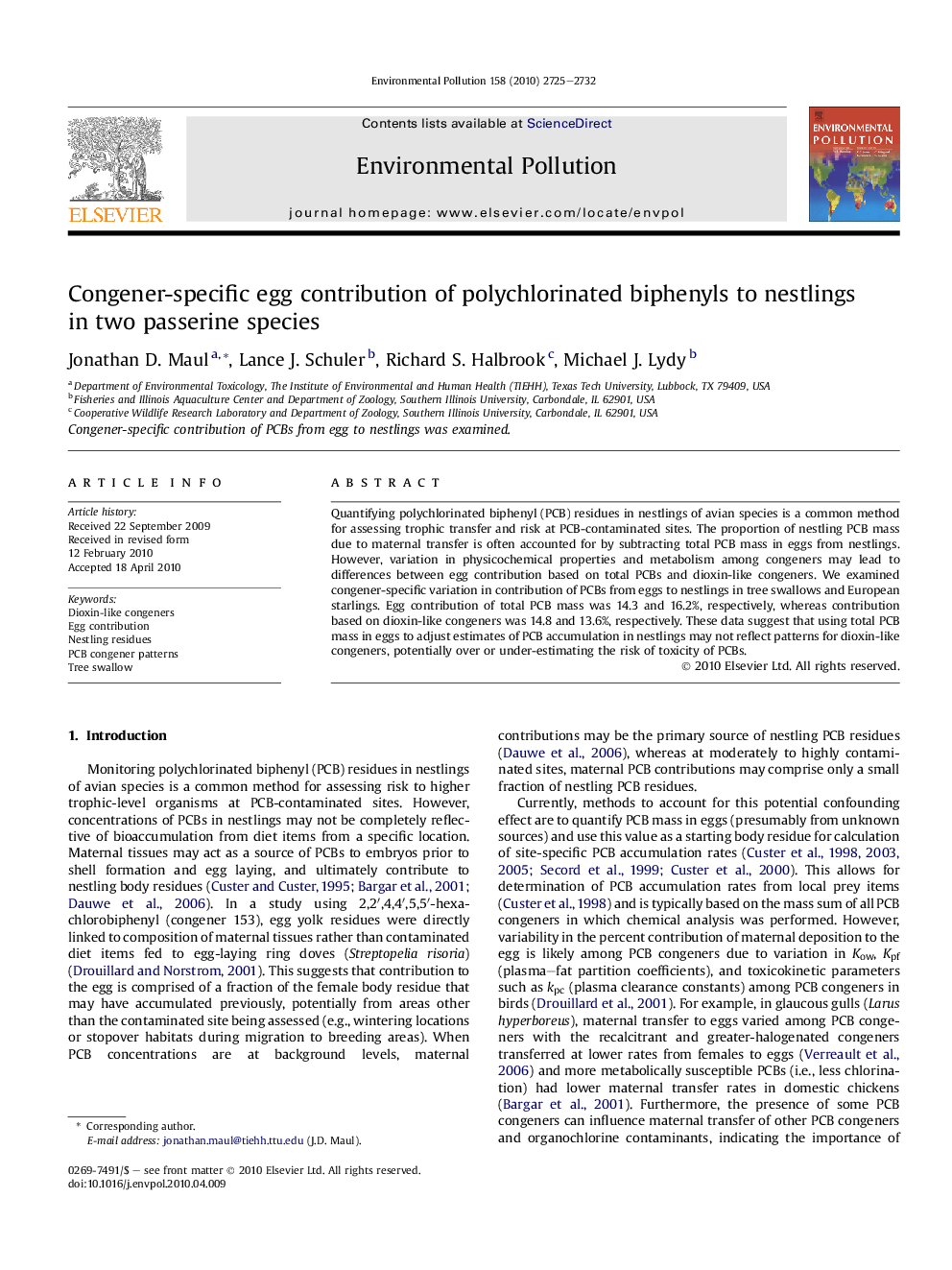| Article ID | Journal | Published Year | Pages | File Type |
|---|---|---|---|---|
| 4425171 | Environmental Pollution | 2010 | 8 Pages |
Quantifying polychlorinated biphenyl (PCB) residues in nestlings of avian species is a common method for assessing trophic transfer and risk at PCB-contaminated sites. The proportion of nestling PCB mass due to maternal transfer is often accounted for by subtracting total PCB mass in eggs from nestlings. However, variation in physicochemical properties and metabolism among congeners may lead to differences between egg contribution based on total PCBs and dioxin-like congeners. We examined congener-specific variation in contribution of PCBs from eggs to nestlings in tree swallows and European starlings. Egg contribution of total PCB mass was 14.3 and 16.2%, respectively, whereas contribution based on dioxin-like congeners was 14.8 and 13.6%, respectively. These data suggest that using total PCB mass in eggs to adjust estimates of PCB accumulation in nestlings may not reflect patterns for dioxin-like congeners, potentially over or under-estimating the risk of toxicity of PCBs.
